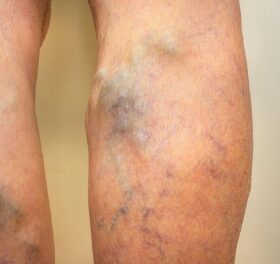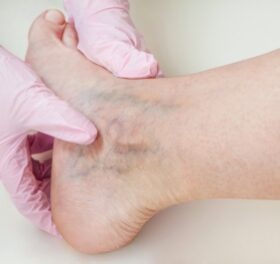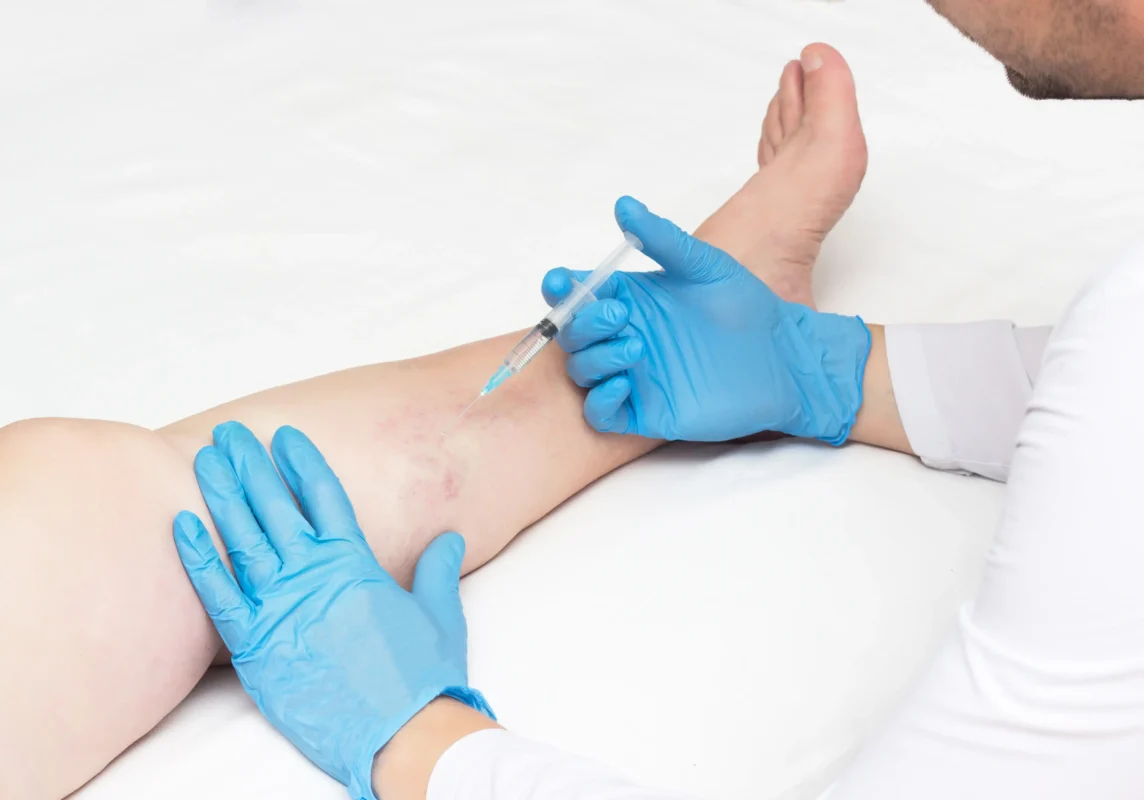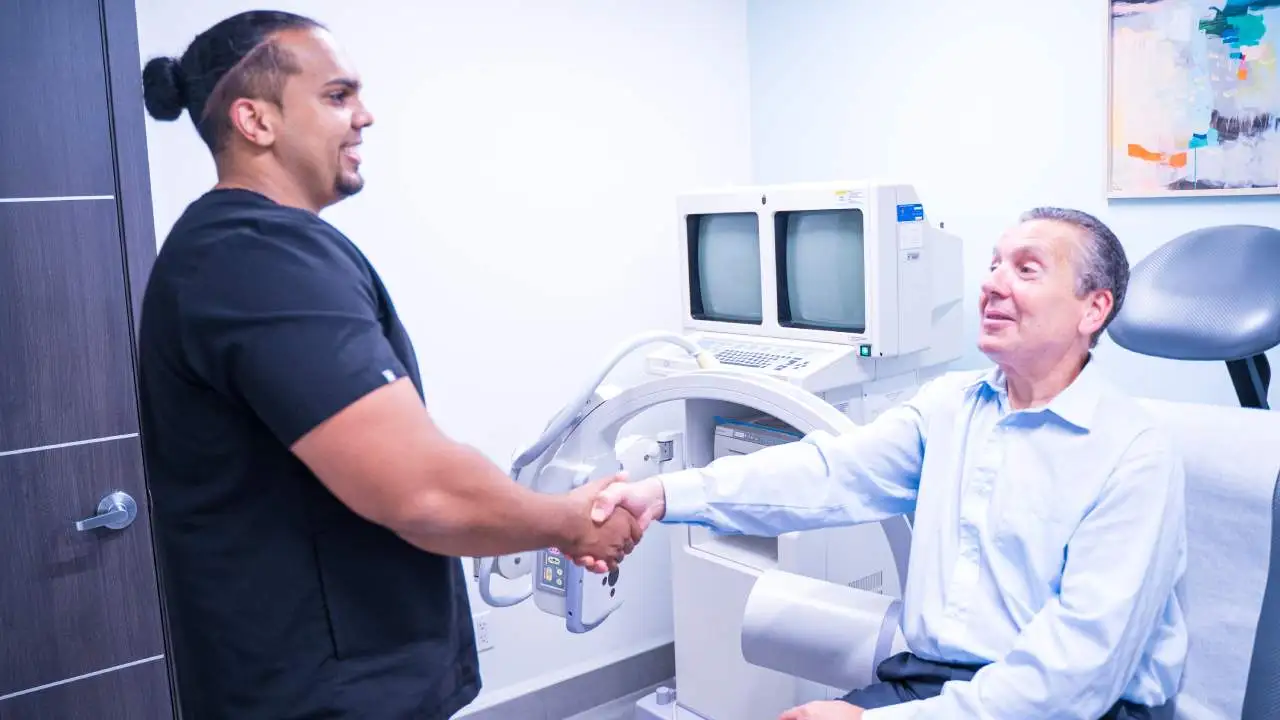Clever subtitle to add here to create interest
Brief description of what te readers will find below, like a summary of the treatment or why they sould be reading this
Leg pain can be a frustrating and often debilitating condition that affects millions of people worldwide. While there are many potential causes of leg pain, including injury, nerve damage, and muscle strain, it may come as a surprise that heart issues can also play a role. In this article, we will explore the relationship between heart problems and leg pain, as well as other possible causes of this discomfort, including vein disease. Whether you are experiencing leg pain yourself or are simply looking to learn more about this common health concern, this article will provide valuable insights and information.
Vein Treatment Clinic is a state-of-the-art medical center led by board-certified vein doctors specializing in cutting-edge, minimally invasive spider vein and varicose vein treatments. Our vein doctors carefully examine your leg veins, discuss your symptoms, and review your medical history to curate a personalized treatment plan. If your leg pain is caused by underlying vein disease, your treatment plan may include compression stockings, exercise, and minimally invasive treatments that address the root cause of your leg pain.
We have state-of-the-art vein treatment clinics in New York City, Long Island, New Jersey, California, and Maryland. If you’re in California, you can visit our vein centers in San Diego or San Jose near Palo Alto, Sunnydale, and Santa Clara. Please schedule an appointment at your nearest vein treatment clinic for leg pain diagnosis.
Can heart issues cause leg pain?
Yes, heart issues can cause leg pain. One condition that may lead to leg pain is chronic venous insufficiency, a condition where the veins have difficulty returning blood to the heart. This can cause blood to pool in the legs and lead to swelling, pain, and varicose veins. Another heart issue, peripheral artery disease, can also cause leg pain. This occurs when the arteries in the legs become narrow and limit blood flow, leading to cramping and discomfort, especially when walking. It is important to consult a vein doctor to determine the underlying cause of leg pain and ensure proper treatment.
Chronic venous insufficiency: one of the most common root causes of persistent leg pain
Chronic venous insufficiency (CVI) is one of the most common root causes of persistent leg pain. It occurs when the veins in the legs have trouble returning blood to the heart, causing blood to pool in the legs and leading to swelling, pain, and varicose veins. CVI is often caused by damage to the valve system in the veins, which can be the result of genetics, aging, or prolonged standing or sitting. Symptoms of CVI include aching, fatigue, itching, and burning in the legs, as well as swelling, skin discoloration, and open sores.
What are the risk factors for leg pain?
Leg pain is a common health concern that can have a variety of causes. Understanding the risk factors for leg pain can help individuals take steps to prevent or manage this condition.
- Age: As people get older, their veins and arteries can become less efficient, increasing the risk of leg pain. Additionally, older individuals are more likely to have underlying health conditions that can contribute to leg pain.
- Inactivity: Prolonged periods of sitting or standing can increase the risk of leg pain. This is because these activities can reduce blood flow in the legs and cause blood to pool, leading to swelling, pain, and discomfort.
- Obesity: Being overweight or obese can put extra pressure on the legs, leading to pain and swelling.
- Pregnancy: Pregnant women are at increased risk for leg pain due to the increased pressure on their legs from the added weight of the baby.
- Smoking: Smoking is a risk factor for leg pain because it can damage the veins and reduce blood flow, leading to swelling and discomfort in the legs.
- Chronic health conditions: Conditions such as diabetes, heart disease, and peripheral artery disease can increase the risk of leg pain.
How to prevent leg pain?
Leg pain can be a debilitating condition, but there are steps individuals can take to reduce their risk and prevent this discomfort.
- Exercise regularly: Regular physical activity can improve circulation and reduce the risk of leg pain. This can include activities such as walking, biking, or swimming.
- Maintain a healthy weight: Being overweight or obese can increase the risk of leg pain. Maintaining a healthy weight through diet and exercise can reduce this risk.
- Avoid prolonged sitting or standing: Prolonged periods of sitting or standing can lead to reduced blood flow and swelling in the legs. Taking frequent breaks to move and stretch can prevent leg pain.
- Wear supportive footwear: Wearing shoes that provide adequate support can reduce the risk of leg pain and prevent other foot problems.
- Quit smoking: Smoking is a risk factor for leg pain, so quitting smoking can reduce the risk of this condition.
- Wear compression stockings: Compression stockings can improve circulation and prevent swelling in the legs.
Incorporating these strategies into your daily routine can prevent leg pain and maintain healthy, pain-free legs. If you are experiencing persistent leg pain, it’s important to consult a vein doctor to determine the underlying cause and develop an effective treatment plan.
The importance of regular checkups
In addition to incorporating preventative measures, it’s important to regularly monitor your leg health by getting regular check-ups with a vein doctor. This is especially important if you have any underlying health conditions or are at higher risk for leg pain and vein disease due to factors such as age or obesity. Regular check-ups can help detect issues early on, allowing for prompt treatment and reducing the risk of long-term complications.
Your vein doctor may also provide personalized advice and recommendations for maintaining healthy legs based on your individual health status and risk factors. Regular check-ups are a critical component of preventing and managing leg pain.











